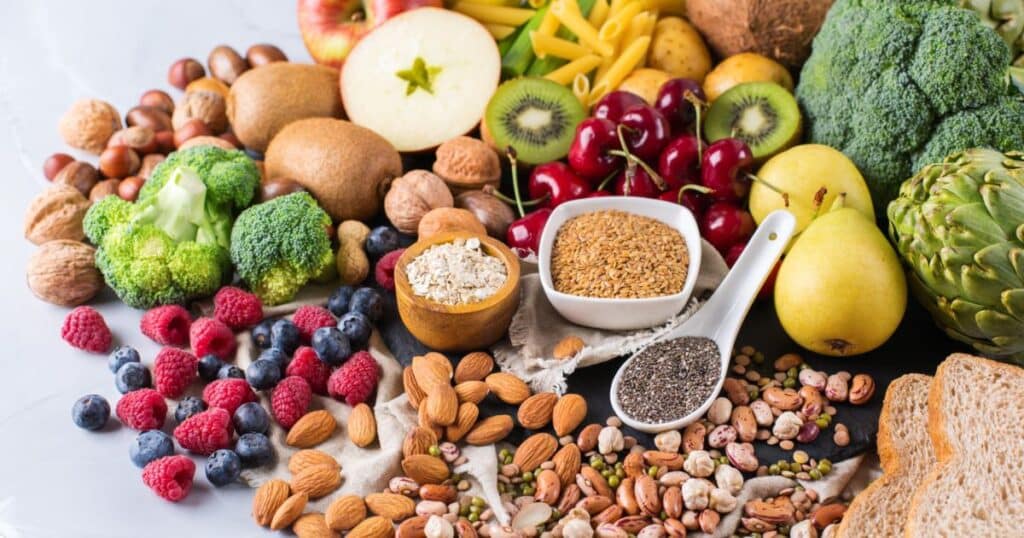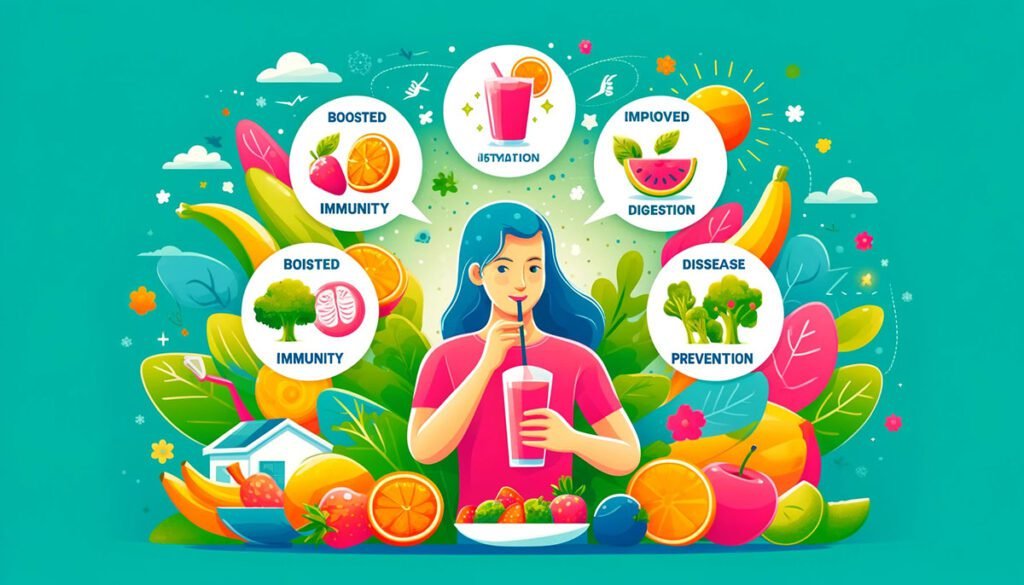At WellHealthOrganic.com, we’re passionate about promoting holistic health and wellness through natural, nutrient-rich foods. While many of us are accustomed to discarding fruit and vegetable peels without a second thought, we’re missing out on a treasure trove of nutritional benefits hidden within these often-overlooked parts of our produce. In this comprehensive guide, we’ll explore the nutritional benefits of eating peels and provide practical tips for incorporating them into your diet. Join us as we unlock the potential of peels and discover how they can contribute to your overall health and well-being.
The Power of Peels
Fruit and vegetable peels are rich in essential nutrients, including vitamins, minerals, antioxidants, and dietary fiber. While the flesh of fruits and vegetables often receives the most attention, the peels contain concentrated levels of nutrients that offer numerous health benefits. By incorporating peels into your diet, you can enhance the nutritional value of your meals and support your body’s health in various ways.
Nutritional Benefits of Eating Peels
- Vitamins and Minerals: Peels are packed with vitamins and minerals that are essential for overall health and well-being. For example, citrus peels are rich in vitamin C, a powerful antioxidant that supports immune function and skin health. Potato peels are high in potassium, magnesium, and vitamin B6, while apple peels contain vitamin A, vitamin C, and dietary fiber.
- Antioxidants: Many fruit and vegetable peels contain potent antioxidants that help protect the body against oxidative stress and inflammation. These antioxidants, including flavonoids, phenolic compounds, and carotenoids, can help reduce the risk of chronic diseases such as heart disease, cancer, and diabetes.
- Dietary Fiber: Peels are an excellent source of dietary fiber, which plays a crucial role in digestive health, weight management, and blood sugar control. Fiber helps promote regular bowel movements, prevent constipation, and support the growth of beneficial gut bacteria.
- Phytonutrients: Peels contain phytonutrients, plant compounds that have been shown to have various health benefits, including anti-inflammatory and anti-cancer properties. These phytonutrients contribute to the vibrant colors of fruits and vegetables and offer unique health-promoting effects.
Practical Tips for Eating Peels
Incorporating peels into your diet is easier than you might think. Here are some practical tips for enjoying the nutritional benefits of peels:
- Choose Organic: Whenever possible, opt for organic fruits and vegetables, especially if you plan to eat the peels. Organic produce is less likely to contain pesticide residues and other harmful chemicals that can accumulate in the skin.
- Wash Thoroughly: Before eating or cooking with peels, wash them thoroughly under running water to remove any dirt, bacteria, or pesticide residues. Use a vegetable brush to scrub the surface gently, particularly for fruits and vegetables with thicker skins.
- Try Different Preparation Methods: Experiment with different preparation methods to find ways to incorporate peels into your meals. For example, you can add citrus zest to salads, marinades, or baked goods for a burst of flavor and nutrients. Potato peels can be roasted until crispy and seasoned with herbs and spices for a delicious snack or side dish.
- Blend into Smoothies: For fruits with edible peels, such as apples and pears, consider blending them whole into smoothies or juices. This allows you to enjoy the nutritional benefits of the entire fruit while minimizing waste.
- Make Homemade Chips: Transform vegetable peels, such as carrot, beet, or sweet potato peels, into crunchy, flavorful chips. Toss the peels with olive oil and your favorite seasonings, then bake them in the oven until crispy for a nutritious snack.
- Add to Soups and Stews: Incorporate vegetable peels, such as onion, garlic, and carrot peels, into soups, stews, and broths to add depth of flavor and nutrients. Simply simmer the peels along with other ingredients and remove them before serving.
- Blend into Purees: For fruits and vegetables with tougher or less palatable peels, such as squash or pumpkin, consider blending them into purees or sauces. This allows you to enjoy the nutritional benefits of the peels without compromising texture or taste.
Antioxidants and Other Hidden Perks of Eating the Peel

Beyond their impressive vitamin and mineral content, fruit and vegetable peels are also rich sources of antioxidants and other beneficial compounds that can profoundly impact your health. Let’s delve into some of the hidden perks of eating peels:
Antioxidant Power
Peels are packed with powerful antioxidants that help protect your cells from damage caused by free radicals, which can contribute to the development of various chronic diseases:
- Carotenoids: Compounds like beta-carotene and lycopene, found in abundance in pumpkin, carrot, and sweet potato peels, have been shown to have potent antioxidant and anti-inflammatory properties, potentially reducing the risk of certain cancers.
- Flavonoids: These plant-based compounds, such as anthocyanins (found in cabbage, red grapes, and berries), have been linked to lower levels of inflammation and a reduced risk of chronic diseases like heart disease and certain types of cancer.
- Ellagic acid: Present in strawberries and raspberries, this antioxidant has been associated with a lower risk of heart disease and may also possess anti-cancer properties.
Mood-Boosting Compounds
Did you know that citrus peels contain aromatic compounds like limonene and naringin that have been shown to have calming and mood-boosting effects? These compounds may help alleviate stress and anxiety, making citrus peels a valuable addition to your diet for both physical and mental well-being.
Detoxification Support
Consuming fruit and vegetable peels may also support your body’s natural detoxification processes. These nutrient-dense skins can stimulate bile production, which helps to emulsify and remove toxins from the body. Peels may support phase 2 liver detoxification, further enhancing your body’s ability to eliminate harmful substances.
By incorporating peels into your diet, you’re not only getting a boost of vitamins, minerals, and fiber, but also a wide array of antioxidants and other protective plant compounds that can have profound impacts on your overall health and well-being.
Tips for Conveniently Adding More Peels to Your Meals

Now that you understand the incredible nutritional benefits of fruit and vegetable peels, you may be wondering how to incorporate them into your diet easily and conveniently. Here are some simple tips to help you get started:
- Bake Peel Chips or Fries: Transform sweet potato or pumpkin peels into deliciously crunchy chips or fries by tossing them with a little oil, herbs, and spices, and baking until crispy. These make for a fiber-rich, nutrient-packed snack or side dish.
- Blend Peels into Smoothies: Add nutrient-packed citrus or banana peels to your morning smoothie or juice for an extra antioxidant punch. Just be sure to remove any bitter white pith from the citrus peels first.
- Use Peels in Soups and Sautees: Instead of peeling carrots, zucchini, or potatoes, simply grate or thinly slice them (with peels on) and add them to your favorite soups, stews, or sauteed dishes for an extra boost of fiber and nutrients.
- Eat Raw Peels with Dips: Enjoy the peels of apples, pears, kiwis, mangoes, and papayas raw by dipping them in nut butter, yogurt, or hummus for a portable and nutritious snack.
- Zest and Bake with Peels: Use the zest of citrus peels to add flavor and nutrients to baked goods like cookies, cakes, and breads. You can even try making sweet orange peel candy for a tasty treat.
- Get Creative with Veggie Scraps: Don’t toss those turnip greens, beet stems, or broccoli stalks! Roast them with a bit of oil and seasoning for a flavorful and nutrient-dense side dish or snack.
Remember, the key is to start slowly and incorporate peels gradually into your meals and snacks. Begin with one or two types of peels that you enjoy, and experiment with different recipes and preparation methods to find what works best for you and your family.
THE NUTRITIONAL PROFILE OF FRUIT AND VEGETABLE PEELS

Overview of Nutrients
Fruit and vegetable peels are rich in vitamins, minerals, and antioxidants, often surpassing the nutritional value of the flesh. These nutrients are vital for maintaining good health and preventing chronic illnesses. Peels contain polyphenols and carotenoids, potent antioxidants that guard against oxidative stress and reduce inflammation.
Fiber Content
Peels are a great source of dietary fiber. Fiber is crucial for digestion, helping to ensure regular bowel movements and prevent constipation. It also aids in weight management by promoting satiety and lowering overall calorie intake. Additionally, fiber helps regulate blood sugar levels, which benefits people with diabetes.
Specific Examples
- Apple Peels: Rich in quercetin, an antioxidant with anti-inflammatory and antihistamine effects. High in fiber, they help lower cholesterol, contributing to heart health.
- Banana Peels: Loaded with potassium, essential for heart and muscle function. They also contain tryptophan, which improves mood and sleep.
- Orange Peels: Packed with vitamin C and flavonoids like tangerine and nobiletin, which have anticancer and antidiabetic properties. They also contain pectin, a fiber that supports digestion.
- Potato Peels: An excellent source of iron, potassium, and vitamin C, along with significant fiber, which aids digestion and supports a healthy gut microbiome.
By understanding the nutritional value of these peels, you can make informed choices about adding them to your diet for better health.
HEALTH BENEFITS OF CONSUMING PEELS

Digestive Health
Eating fruit and vegetable peels can greatly improve digestion due to their high fiber content. Fiber adds bulk to stool, promoting regular bowel movements and preventing constipation. It also acts as a prebiotic, feeding beneficial gut bacteria and supporting a healthy microbiome. This can improve nutrient absorption and reduce gastrointestinal issues like irritable bowel syndrome (IBS).
Immune System Boost
Vitamins and antioxidants in peels boost the immune system. Orange peels, for example, are rich in vitamin C, an antioxidant that enhances immune function by stimulating white blood cell production. Polyphenols and carotenoids in various peels protect cells from oxidative damage, lowering the risk of chronic illnesses and infections.
Conclusion
Eating peels is a simple yet effective way to boost the nutritional value of your diet and support your overall health and well-being. By incorporating peels into your meals and snacks, you can enjoy a wide range of vitamins, minerals, antioxidants, and dietary fiber that are essential for optimal health. Whether you’re adding citrus zest to your morning smoothie or roasting potato peels for a savory snack.

